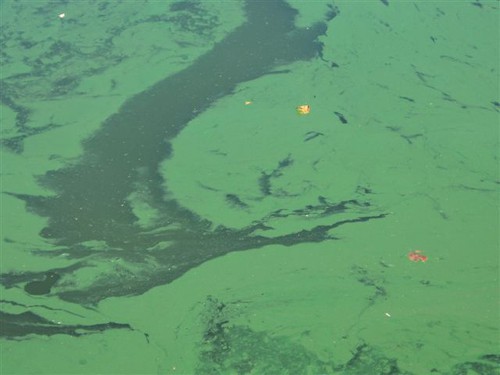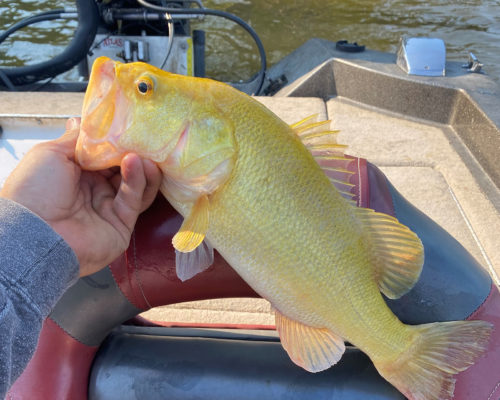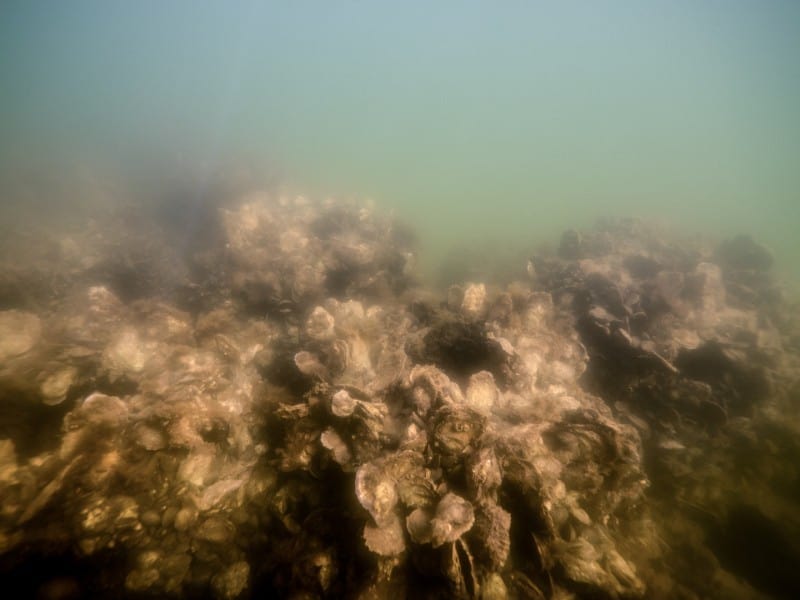As tragic pet deaths make headlines down the East Coast, there are multiple warnings in the Chesapeake Bay region about harmful blue-green algae.
Right now in the mid-Atlantic, conditions are ripe for cyanobacteria, better known as the blue-green algae that killed three beloved dogs this month at a Wilmington, North Carolina pond.
Harpo, Izzy, and Abby were swimming on a “doggie play date” with owners Melissa Martin and Denise Mintz on the evening of August 8th; just after midnight, all three dogs had to be euthanized. In a Facebook post, Martin wrote, “What started out as a fun night for them has ended in the biggest loss of our lives.”

Blue-green algae blooms typically happen in nutrient-rich, fresh or brackish water when the temperature is warmer than 75 degrees. The blooms produce toxic microcystin, which can damage the livers of both humans and pets.
According to the ASPCA, blue-green algae toxicity in dogs can cause seizures, vomiting, panting, respiratory and liver failure, and ultimately death. The organization points out that animals can be especially vulnerable because the algae bloom’s slimy film often concentrates along the shoreline, where they may drink or swim.
It’s not only pets who are at risk during algae blooms. In people, cyanobacteria can cause skin rash and gastrointestinal illnesses, such as upset stomach, nausea, vomiting and diarrhea. Health departments caution people to stay out of the water, and if contact is unavoidable, shower and wash your clothes right away. If your skin becomes irritated, see a doctor. If you choose to eat fish caught in waterways where the algae is present, cook it thoroughly and remove the skin.
Right now there are at least three advisories or warnings for harmful algal blooms in Maryland and Virginia. The Anne Arundel County Department of Health has had a Direct Water Contact Advisory in effect since July 3rd on Lake Waterford in Pasadena. The health department says signs are posted, and the advisory will stay in effect “until further notice.”
Just this past weekend, Montgomery Parks issued a warning about Lake Needwood and Lake Frank, inside Rock Creek Regional Park. Montgomery Parks says recent testing in Lake Needwood shows elevated levels of microcystin, writing, “Of particular concern are dogs that are off-leash and may swim and/or drink from the lake, despite park regulations.” Signs have been posted there, too.
“Portions of both lakes may be contaminated for the rest of the season. We will continue to monitor and update signs when the warning is lifted,” says Matt Harper, Natural Resources Manager for Montgomery Parks.
In Virginia, a Harmful Algae Bloom Advisory is in effect for the Upper and Middle Pamunkey River and Upper and Middle North Anna Branches in Orange, Louisa, and Spotsylvania Counties, off of the York River. Samples collected at Lake Anna on July 30 showed levels of cyanobacteria unsafe for swimming.
At any body of water, health officials say, look out for bright green water, sometimes with a surface scum that resembles green paint. The Virginia Department of Health puts it succinctly: “WHEN IN DOUBT, STAY OUT.”
-Meg Walburn Viviano




